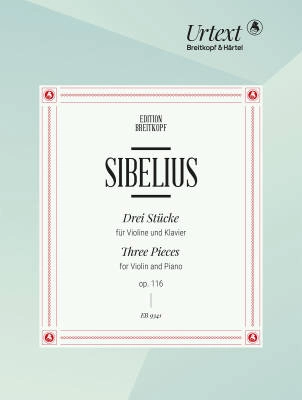Opens in a new window
Breitkopf & Hartel 3 Pieces for Violin and Piano Op. 116 - Sibelius/Pulkkis - Violin/Piano - Book
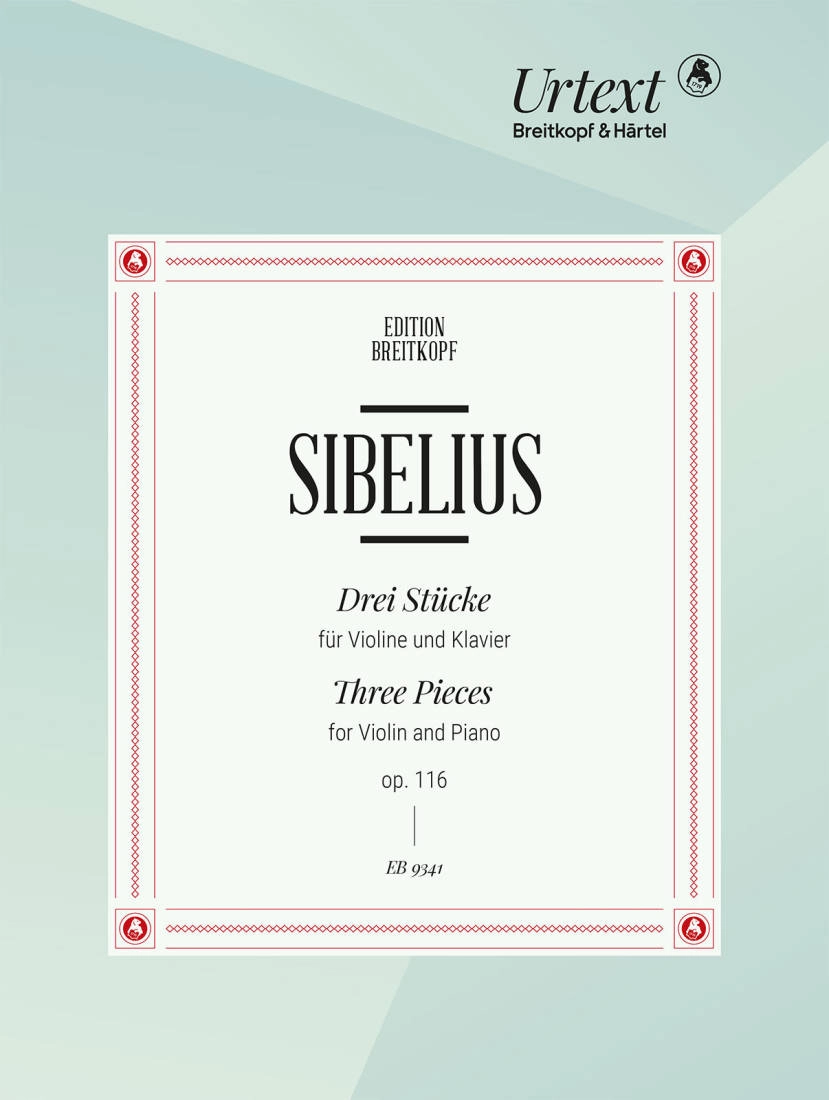
Additional Photos:
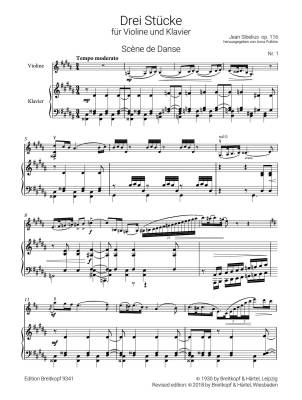
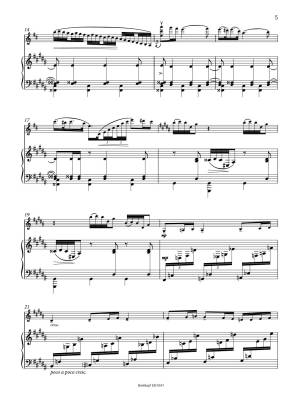
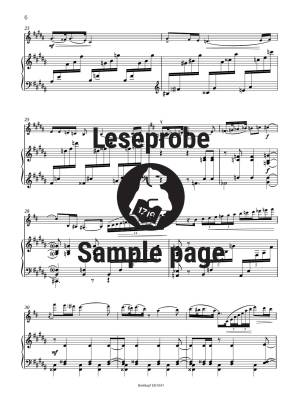
- Composer/Author: SIBELIUS, JEAN
- Instrumentation: VIOLIN
- Model # EB9341
Composer: Jean Sibelius
Editor: Anna Pulkkis
Format: Book (Urtext)
Instrumentation: Violin and Piano
The violin was Sibelius's instrument, and the virtuoso aspect is eminent in Drei Stucke Op. 116 as well as in his entire oeuvre for violin and piano. Apart from that, Op. 116 provides a glimpse into the last active phase of Sibelius's career as a composer.
Sibelius completed Three Pieces for Violin and Piano Op. 116 (Scene de Danse, Danse caracteristique, Rondeau romantique) in the spring of 1929. The impetus for composing them probably came from the New York publisher Carl Fischer. Fischer rejected the pieces, however, due to "the extremely unfortunate constellation in the music publishing field in the United States". Apparently, he didn't believe in their success, because they were too demanding.
Sibelius turned to Breitkopf & Hartel, who gladly accepted Drei Stucke. The musical sources indicate that Sibelius had second thoughts on some details, and he made emendations to the pieces before their publication in December 1930. At the end of the 1920s, Sibelius was working on his Eighth Symphony, which was left unfinished. Thus, Three Pieces remained his last opus-numbered compositions.
Media
1. Scene de Danse from 3 Pieces Op. 116 by Jean Sibelius
Press play to listen
2. Danse caracteristique from 3 Pieces Op. 116 by Jean Sibelius
Press play to listen
3. Rondeau romantique from 3 Pieces Op. 116 by Jean Sibelius
Press play to listen
Q & A
There are currently no questions for this product.
Reviews
There are currently no reviews for this product. Be the first to write one!


